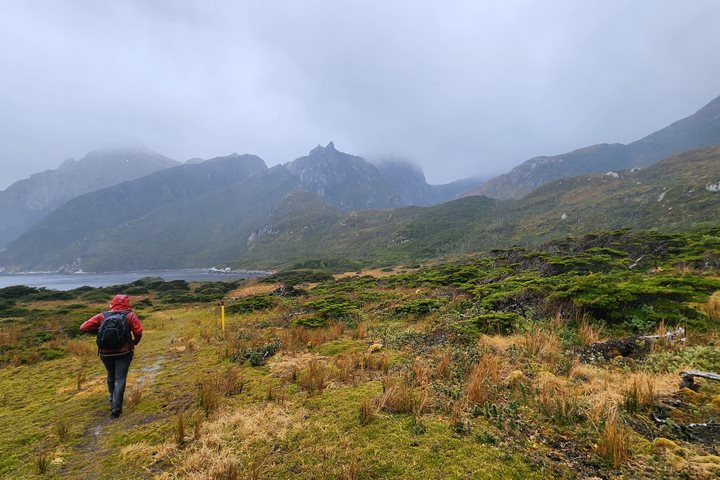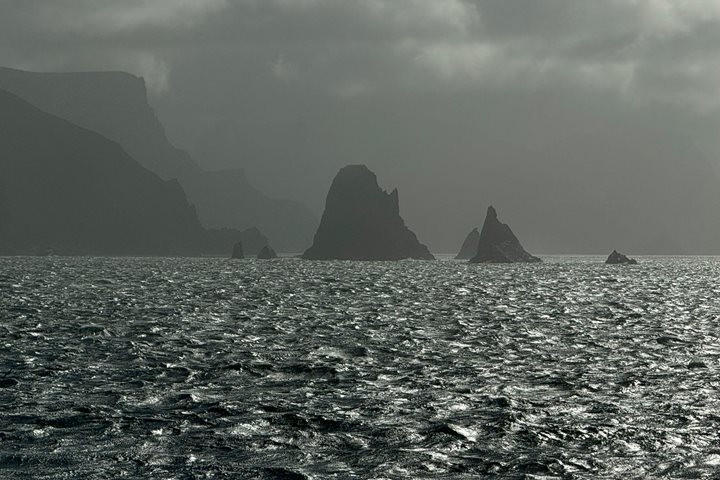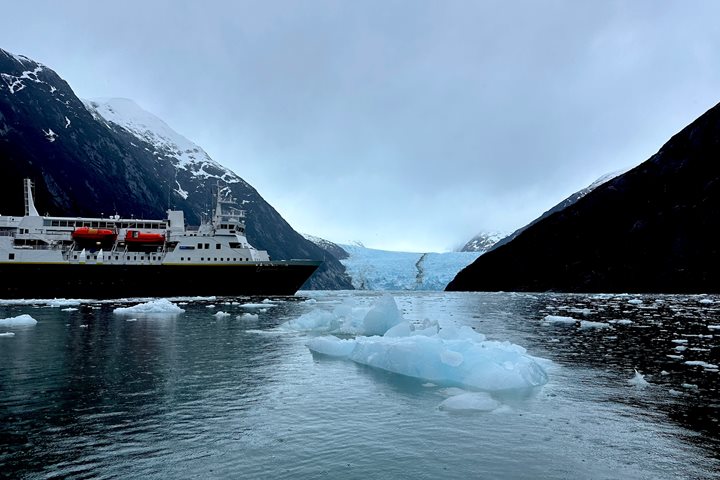We awoke in Puerto Natales to a bright and shiny morning. Surprisingly, there was no wind, an anomaly in a land famous for spring and summer winds. Calm conditions meant a surfeit of reflections of anchored boats, ferries, and especially the recent snow on the nearby mountains on Peninsula Antonio Varas. During breakfast, we set sail to spend a day exploring the fjords in Última Esperanza, the southern Patagonian province of Chile.
We navigated a maze of small islands. Once the tips of mountains, these islands have been held in a frozen embrace for thousands of years. The fjords, long fingers cut into the land, are handprints of the glaciers that carved and shaped the terrain.
In the morning, Lindblad photo instructor Jeff Litton gave us an introduction to expedition photography with an inspirational selection of his relevant images.
To safely sail these waters, Captain Martin Graser, his staff, and Expedition Leader Peter Wilson paid attention to the tides and read the currents. Their plan was to arrive at White Narrows during slack water when dangerous and strong currents would be less powerful in this challenging channel. They orchestrated our arrival perfectly. We sent out officers in a Zodiac to measure the currents and radio their readings back to the bridge.
While most of us stood on deck to watch, making jokes about whether anyone had greased the sides of our ship, we squeezed between the narrows. On board since Puerto Williams, our Chilean pilots Hector Carrasco and Cesar Miranda oversaw our progress as we carefully and seemingly effortlessly proceeded against only one knot of current through the first narrows and zero knots in the second, demonstrating a superb job of navigational skills and timing.
We set sail towards Canal de Las Montañas, a deep glacial gouge that is straight as a ruler. Between saw-toothed ridges, tidal glaciers once nosed into this rarely visited channel. The weather seemed threatening for a moment before reverting to blue skies and calmer winds.
Bernal Glacier was an irresistible presence that beckoned us to explore. Over time, countless layers of snow compacted the ice so heavily that the bottommost layer began to slide. The downflow is called a glacier.
Passing a terminal moraine and turquoise water full of glacial silt, we walked towards the glacier on a rocky path through verdant and abundant new growth, including pig vine, coigue, and a wonderful example of fuchsia magellanica in bloom along the trail. The blunt face of the glacier towered above, staggering in its immensity. Its face is scarred with gashes of the deepest ultramarine blue. The glacier’s convex nose grinds over the land like a sanding belt, conveying rock and debris that scrape against the mountains and scour them, archiving everything within its hold. It hollows out U-shaped cirques and carves canyons into chalice-like basins waiting to fill with glacial melt. We witnessed and heard a small avalanche of rock fall from the ice, full of portent. We wondered what it would sound like to hear an ice field melting.
After returning to our ship, we met in the lounge for Captain’s Welcome Cocktails, where Captain Martin Graser introduced his hardworking officers. He reminded us that what appears effortless is due to the combined talent and teamwork of his hardworking crew.
Sunset was a little past ten. It will be later again tomorrow night, and sunrise will come a little bit earlier. We are approaching Summer Solstice and the longest day of the year.
Writers: Macduff Everton & Mary Heebner







